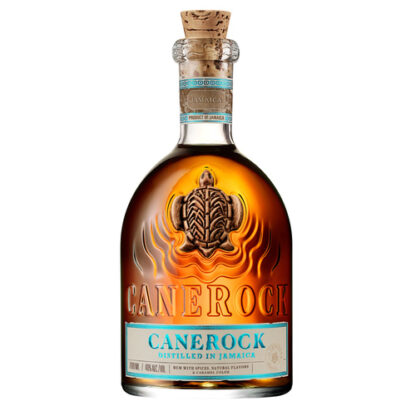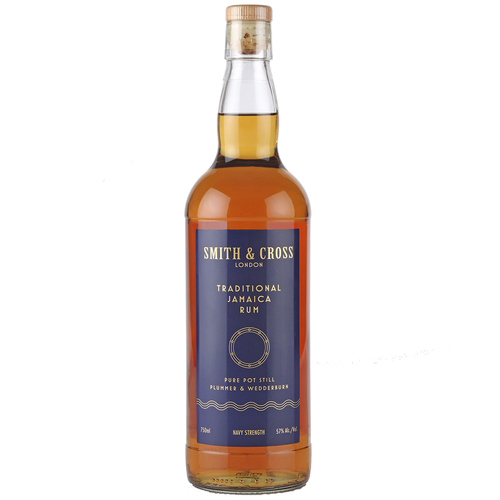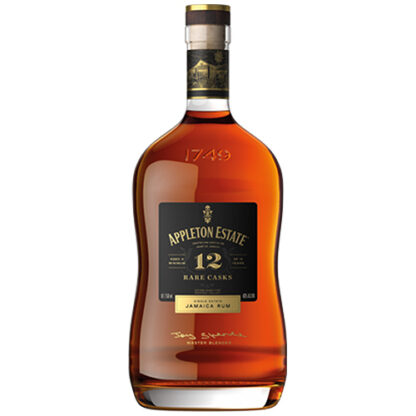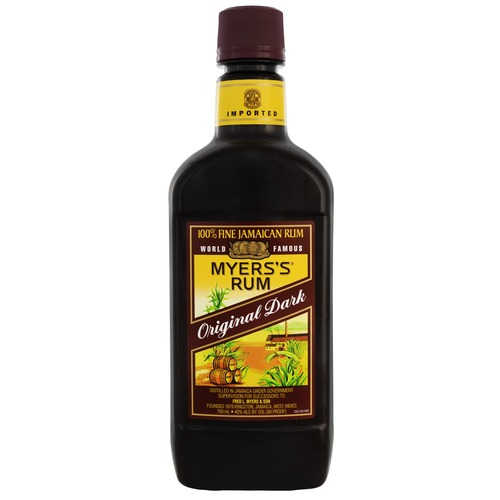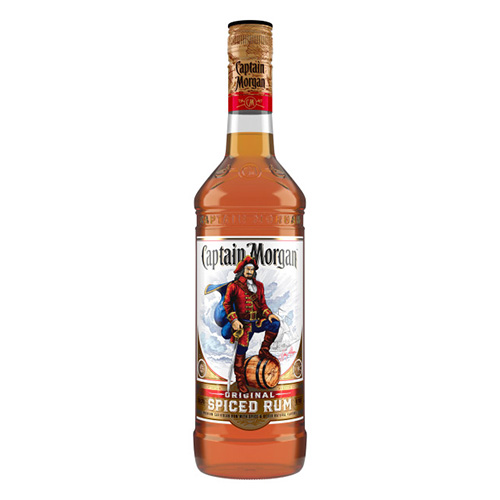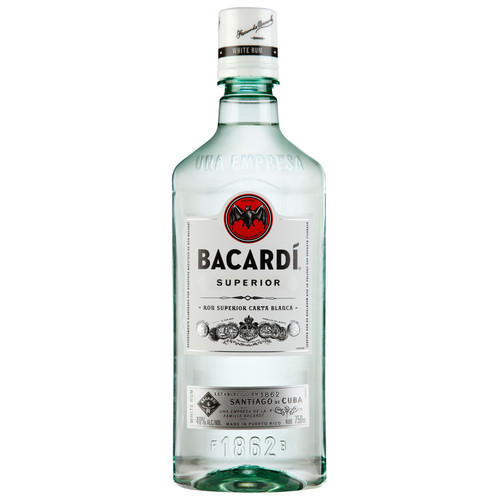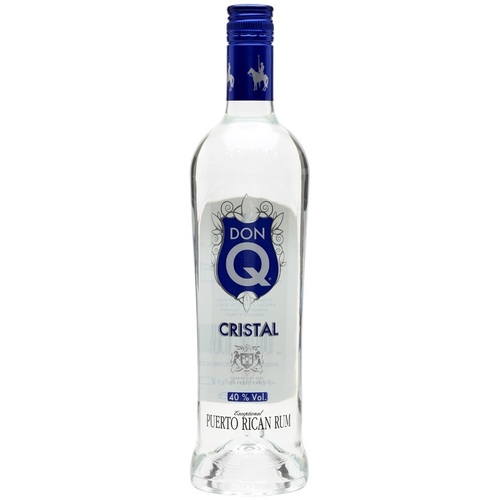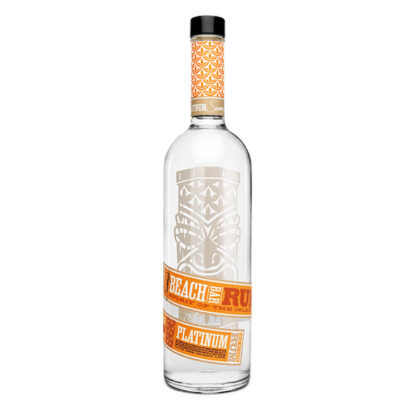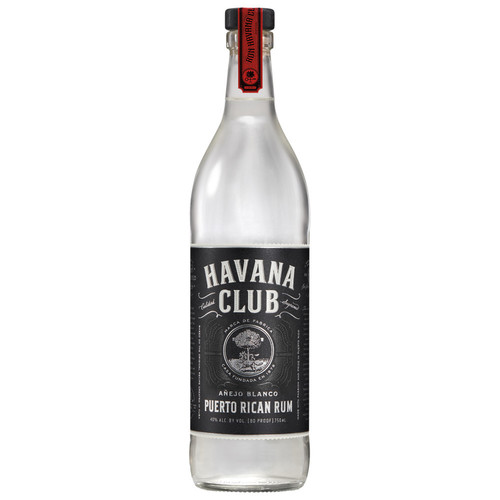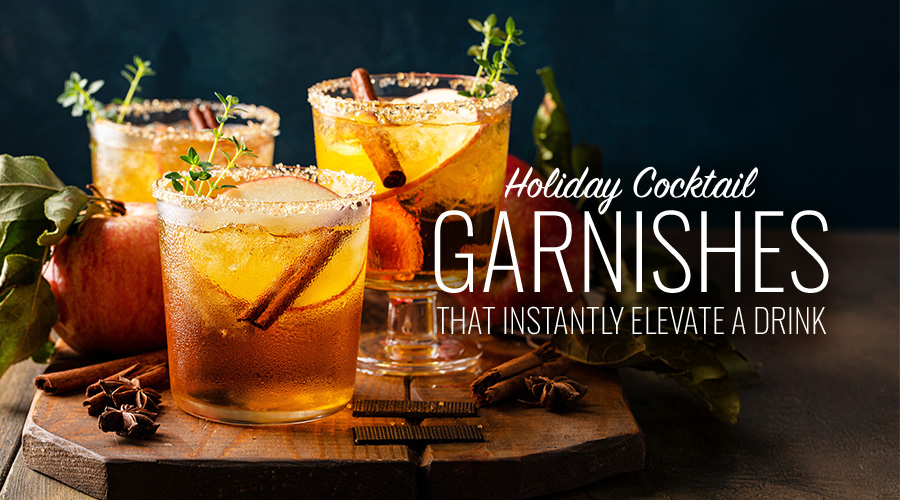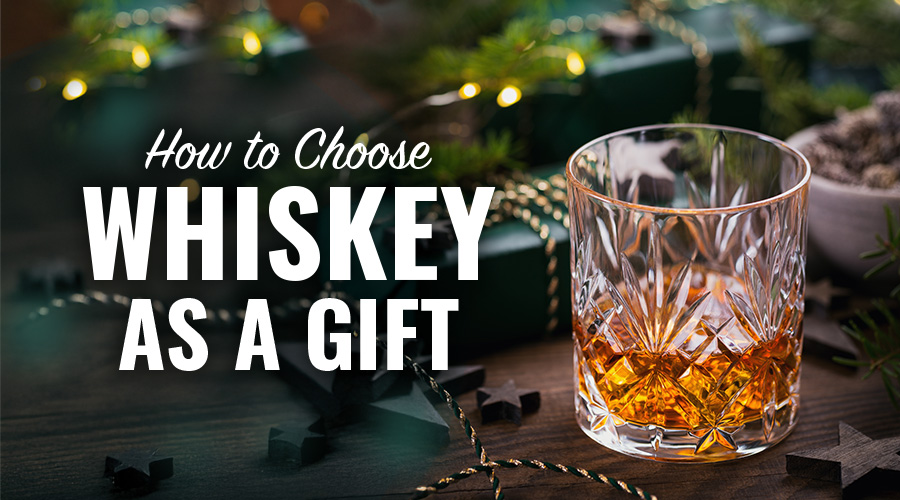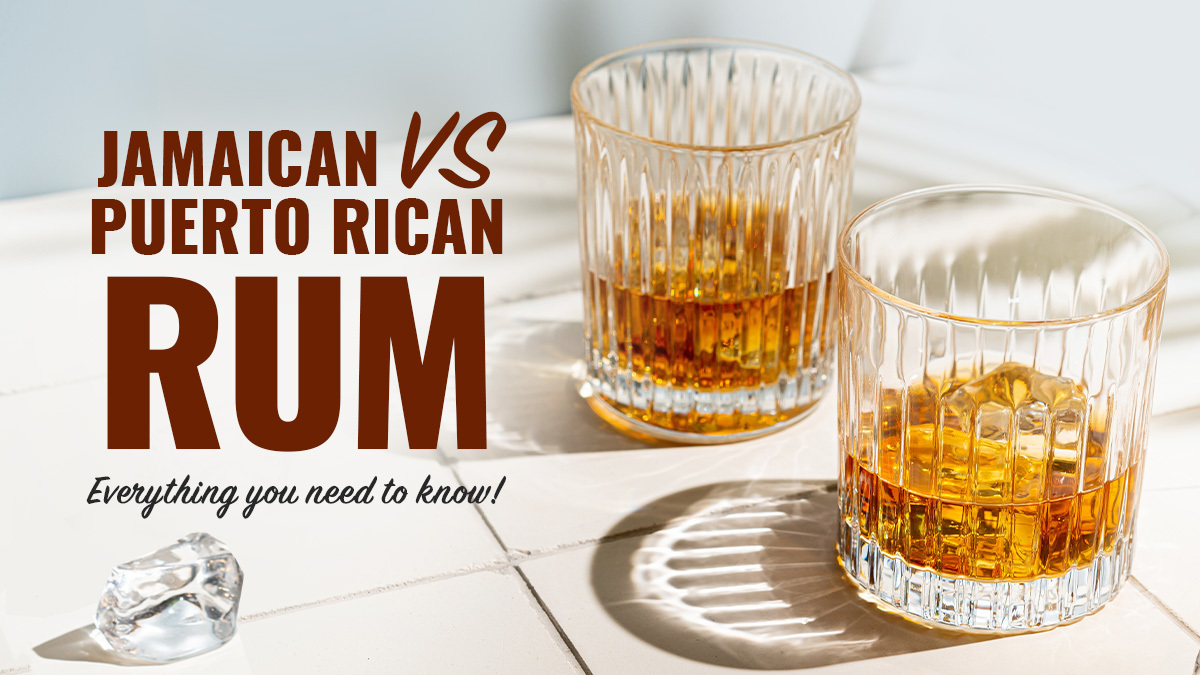
What is Rum?
Summer Lovin’, Having Some Rummmmm. Ok, those may not be the exact lyrics used in the 1978 movie, Grease, but the facts remain the same. Summer is the perfect time to sip on the rum you love. And while we know that rum is made from the fermentation of molasses and sugarcane juice, it is also important to know that different areas create different rums. The Black River, integral to Jamaica’s rum history, provides the limestone-filtered water used to craft their rum. And recently, there has been a battle brewing between two Caribbean islands to see which has the best rum; Jamaica and Puerto Rico. Rum production methods vary, with some using pot stills and others using column stills, reflecting the historic colonial styles of British, Spanish, and French influences.
What’s the Difference Between Jamaican Rum and Puerto Rican Rum?
So what is the difference between Jamaican rum and Puerto Rican rum? Well, the main differentiator is their flavor profiles.
For starters, Jamaican rum is known for its robust flavor profile that’s usually characterized by strong fruity, spicy, and sometimes funky notes. This is partly due to the use of specific yeast strains, longer fermentation periods, and the pot stills are commonly used in the creation process.
In contrast, Puerto Rican rum tends to be lighter and smoother. It is typically distilled using continuous column stills, which produce a lighter, cleaner, and more straightforward flavor profile that is often preferred for mixing in cocktails. Some Caribbean countries are known for producing light, delicate rums that derive most of their flavor from aging.

What Do You Mix with Jamaican Rum?
Like we’ve stated earlier, Jamaican rum is known for its robust, and sometimes funkier, fruity flavors. Jamaican rum can also be mixed with ginger beer for a refreshing twist. And we’ve found that what mixes best with it are things like pineapples and limes that compliment its richer characteristics. Here‘s a couple of the best recipe examples:
Jamaican Rum Punch
- In a pitcher mix together orange juice, pineapple juice, fruit punch, and lime juice.
- Once everything is well blended, stir in the spiced rum.
Jamaican Breeze
- In a shaker, muddle the ginger.
- Add rum, pineapple juice, simple syrup and bitters, then fill with ice.
- Shake until well-chilled, then double-strain into a rocks glass over fresh ice.
- Garnish with a lime wheel.
Jamaican Crawler
- Combine rum, melon liqueur and pineapple juice with ice; stir well.
- Pour into Collins glass; float splash of grenadine on top.
What Do You Mix with Puerto Rican Rums?
For these rums, we’ve found that light, tropical flavors mix the best because they match the rum’s lighter flavor profile. Here’s a couple of the best recipe examples:
Mojito
- In a highball glass, combine the mint leaves and rum and gently macerate the mint.
- Continue to add 2 oz of rum, ¾ oz lime juice, and ¾ oz of simple syrup.
- Add ice, club soda, and stir the ingredients, leaving the macerated mint leaves at the bottom of the glass.
- Garnish your cocktail with a mint leaf and lime wedge.
Piña Colada
- Pour 2 oz of rum, 1 ½ oz of coconut cream, 2 oz of pineapple juice, and a squeeze of lime into a shaker or container with a lid and shake for 30 seconds.
- Strain the mix into a wine glass or a Collins glass.
Caribbean Rum Old Fashioned
- Put 2 oz rum, ¾ oz cane sugar syrup, 2 splashes of Angostura bitters, 2 splashes of orange bitters, and a bit of cherry juice in a cocktail shaker and stir for 2 minutes
- Strain into a double old fashioned glass filled with ice
- Garnish with an orange twist and cherry
What Jamaican Rums Do We Recommend?
Canerock
Made from traditional Jamaican rums and infused with natural spices then aged in oak casks, Canerock Jamaican Spiced Rum has a rich and unique character with sweet vanilla notes, dry fruits and delicate oak tannins.
Add to cartSmith & Cross
The mark of Smith & Cross traces its lineage back to the 18th century with one of England’s oldest producers of sugar and spirits. Now, Smith & Cross is making waves in the bar world with their complex flavors and notes of exotic fruits and spice.
Add to cartAppleton
Appleton Estate is authentic Jamaican rum that seduces the senses and inspires the soul. This spirit is made up with a rare blend that creates a smooth, sophisticated expression of aged rum.
Add to cartMyers’s Dark Rum
Founded by Fred L. Myers’s in 1879 in Kingston, Jamaica, Myers’s represents over a century of authentic Jamaican heritage, pride, and history. Using only pure Jamaican molasses, Myers’s Rum is then carefully blended making for a very distinctive color, aroma, and flavorful taste.
Add to cartWhat Puerto Rican Rums Do We Recommend?
Captain Morgan Spiced
Inspired by rums origins of Prohibition and smuggling, Captain Morgan is a Caribbean rum with a smooth, yet spiced body and subtle notes of vanilla and caramel.
Add to cartBacardi
In 1862, Don Facundo Bacardi Mao set out to revolutionize rum as we know. After ten years of dedication to the craft, he succeeded with a rum that smoothly balances vanilla and almond together in every sip.
Add to cartDon Q Cristal Rum
Don Q Cristal Rum breaks the norm as being one of the few clear rums that uses multiple distillation systems and then aged in American white oak barrels. This produces a cleaner more refined and more delicate flavor profile for an even smoother sup.
Add to cartSammy’s Beach Bar
Beach Bar Rum is born in music. But what do you expect when your founders are rock ‘n roll legends, Sammy Hagar and Rick Springfield. These aged rums are aged for five years and distilled three times to create a unique blend of tropical nots with a hint of coconut and banana.
Add to cartHavana Club
Based on the original cuban recipe from the Arechebala family, Havana Club is aged 1 year in oak barrels blended then aged again for a minimum of 2 months resulting in fruity aromas and hints of vanilla and oak on the pallet.
Add to cartSo You Know the Differences Between Jamaican and Puerto Rican Rum. What Now?
It’s simple, find a Spec’s liquor store near you and buy whichever rum appeals to you the most. Can’t decide? No worries, you can grab both and try them for yourself. It is summer after all, and you should definitely be having some rummmmm. And feel free to put on Grease while you’re sipping. We’ve heard the two pair surprisingly well together.
How is Rum Made?
Earlier, we mentioned that rum is made from the fermentation of molasses and sugarcane juice, but that doesn’t tell the whole story. The rum-making process is quite fascinating and involves these main steps.
- Step 1: Sugarcane is chopped and crushed to extract the juice, which is then boiled to reduce the water content. The juice is then squeezed to create molasses. In certain rum styles, such as Rhum Agricole, fresh pressed cane juice is used instead of molasses.
- Step 2: After the molasses is created, yeast and water are added to the molasses to start the fermentation process and create alcohol. The yeast is carefully chosen to ensure the final rum has the desired taste and aroma. This process can take 24–72 hours and produces a liquid known as “wash”.
- Step 3: Once we have our wash, it undergoes a process called Distillation. Distillation is when one heats the wash in a still, which separates alcohol from water and other compounds based on their boiling points. Since alcohol has a lower boiling point than water, the vapors are collected in batches as the liquid boils and then condensed to separate the alcohol from the waste product. The resulting distillate is a clear liquid.
- Step 4: With our distillate in hand, we can now start the maturation process. Some of the liquid is aged in charred white oak barrels or other casks to add color and flavor. The type of vessel used for aging plays a key role in the final rum’s color. For example, rum aged in oak barrels becomes dark, while rum aged in stainless steel tanks remains almost colorless. Rum can also be bottled unaged or rested for a short time. Brands may also blend rums from different casks to create their own product.
- Step 5: After aging (if applicable), different batches of rum may be blended to achieve a consistent flavor profile. The rum is then filtered, diluted to the desired alcohol content (usually with distilled water), and then bottled.

Additional Fun Facts About Rum Production
- Molasses rum, significant in English and Spanish styles, uses molasses as the base for rum production, reflecting historic colonial methods.
- Rhum Agricole, a unique French style of rum, is made from fresh pressed cane juice and is known for its complex, grassy, and fresh cane notes.
- Rum classifications can be complex, with categories based on production methods, such as ‘spiced rum,’ ‘navy proof,’ ‘dark rum’, ‘light rum’, ‘bay rum’, and ‘overproof rum.’
- The rum world is diverse, encompassing various production techniques and styles, making it essential to understand these differences to appreciate the complexity of rum.


